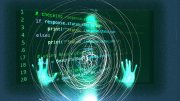Professor of psychology Matthew Nock studies suicide: what causes people to take their own lives; how to predict who will try; and how to prevent it from happening. Nock adapted the Stroop test and the Implicit Association Test—two computerized tests used for other purposes in psychology—to assess suicide risk. Watch the video below to see how these tests work. Read more about Nock's work—and find other relevant links, such as a tool for assessing self-injurious behavior such as cutting—in "A Tragedy and a Mystery," from the January-February 2011 issue (and the sidebar, "Studying Self-Injury"). See also "The Enigma of Suicide," a 1983 Harvard Magazine feature by George Howe Colt.
Video: computerized tests evaluate people's risk of attempting suicide
Video: computerized tests evaluate people's risk of attempting suicide
Learn about computerized tests that evaluate whether someone is at risk of attempting suicide. Plus, related links and an article from the magazine archives.
You might also like
How AI Is Reshaping Supply Chains
Harvard Kennedy School lecturer on using AI to strengthen supply chains
This Astronomer is Sounding a Warning on ‘Space Junk’
As debris accumulates in low Earth orbit, the danger of destructive collisions continues to rise.
Understanding AI Vulnerabilities
As artificial intelligence capabilities evolve, so too will the tactics used to exploit them.
Most popular
Explore More From Current Issue

Open Book: A New Nuclear Age
Harvard historian Serhii Plokhy’s latest book looks at the rising danger of a new arms race.

A Forgotten Harvard Anthem
Published the year the Titanic sank, “Harvard’s Best” is a quizzical ode to the University.

A Near-Perfect Football Season Ends in Disappointment
A loss to Villanova derails Harvard in the playoffs.





